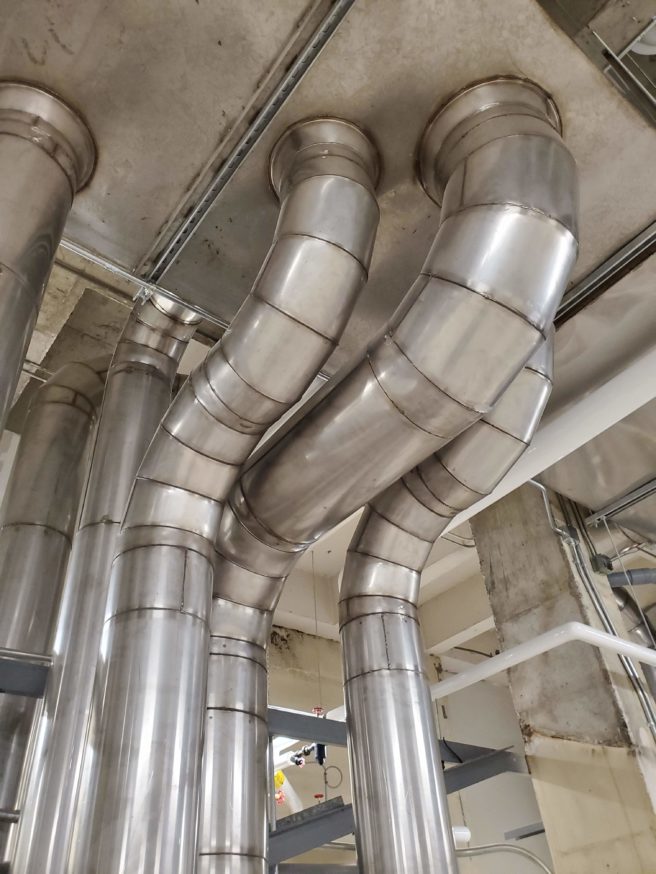Laboratory Exhaust Problems in a University Science Building
SITUATION
A newly installed laboratory exhaust fan system was not meeting design performance requirements, resulting in insufficient duct pressure and frequent chemical fume hood alarms. The alarms were disrupting the activities of the researchers working in the labs, who subsequently filed multiple complaints with university management. When efforts to resolve the situation were unsuccessful, a lawsuit was launched against the designers, suppliers and installers of the equipment.
OBJECTIVE
Haag Canada’s team member was hired to conduct a detailed investigation, and ultimately help to resolve the issue.
APPROACH
Four new high plume exhaust fans had recently been installed on an existing multi-storey laboratory building containing nearly 150 fume hoods. The fans were mounted above a heat recovery mixing plenum with bypass air dampers, and isolation dampers below the fans. The intended design was for three fans to provide the required flow and static pressure with the fourth fan provided for purposes of redundancy. The losses in the ductwork were low and this selection had a decent safety margin, yet the system was not performing as expected.
The team performed the following tasks during the investigation:
- Developed and implemented an overall strategy of data collection to aid in the root cause analysis.
- Subcontracted and directed the activities of an air balancing contractor to measure flows and pressures throughout the building.
- Retained the services of an environmental management company to perform a confined space inspection of the exhaust plenum, which was now exhausting hazardous chemical vapours.
- Coordinated and tracked communications between the mechanical contractor, general contractor, mechanical engineer, controls contractor, university facilities and commissioning agent.
The investigation included a series of tests wherein single changes were made to the operating conditions of the system, and full sets of flow and pressure measurements were recorded. This provided useful information with which to isolate which factors might be impacting the performance. Possible causes included leaky ductwork, leaky isolation dampers, leaky bypass dampers, excessive duct pressure losses, fan performance issues and faulty data from the building automation system.
The team analyzed the extensive data and were quickly able to rule out many of the possible sources of the failure. The final conclusion was that there was excessive unregulated exhaust. The two main sources of this excess exhaust were the vented storage cabinets for hazardous chemicals and the workshops in the basement. Early in construction, the contractor had proposed a value-engineered solution that removed automatic controls from these areas. The mechanical engineer approved this substitution, viewing them as insignificant to the overall performance of the system. A detailed report of findings was prepared including recommendations to upgrade the controls on these unregulated sources of exhaust. As a result of the detailed report, a settlement was reached.
